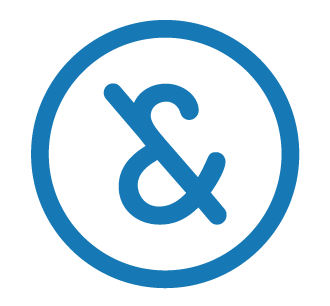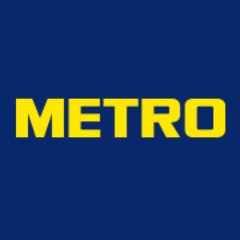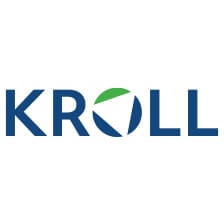Summary of our market study
The French children's clothing market is estimated at 2.5 billion euros.
The European market for children's and baby clothing is estimated at between 45 and 50 billion euros.
One of the main influences on demand for children's clothing is the fertility rate, which fell from 12.8 births per 1,000 inhabitants to 11.3 over the decade. At the same time, the total number of births fell from around 830,000 to 760,000.
Demand is also influenced by the growing preference for second-hand clothing.
The children's clothing market is highly competitive, with a multitude of players including specialist brands, general retailers and e-commerce giants.
Children's clothing prices are expected to continue their downward trend, driven by imports from Asian countries and reduced consumer spending on clothing.
Sales of girls' clothing reached almost 1.5 billion euros, compared with 1 billion euros for boys.
E-commerce is booming.
Industry players
- H&M is a world leader in fast fashion
- Zara, part of the Inditex group, .
Family clothing brands
- Kiabi "Fashion for the whole family at low prices".
- IKKS brings a French design perspective to children's fashion
- C&A
Brands specializing in children's clothing
- Okaïdi-Obaïbi focuses exclusively on children's fashion
- Sergent Major embodies a whimsical approach
- Petit Bateau is a renowned French brand.
to understand this market
Detailed content of our market study
 Inforamtion
Inforamtion
- Number of pages : 35 pages
- Format : Digital and PDF versions
- Last update :
 Summary and extracts
Summary and extracts
1 Market overview
1.1 Definition and scope of study
The children's apparel market covers all clothing and fashion accessories for children aged 2 to 14.
The global market for children's apparel is booming, and outperforming the adult market in both the men's and women's segments. The Asia-Pacific and North American markets dominate the global market, followed by the European market.
In France, the children's clothing market is one of the most buoyant segments in a clothing market that is tending to shrink. The market is mainly structured around specialized players, adult fashion companies that sell a children's range, and food superstores with a clothing section. The market has suffered since the covid crisis, and many well-established brands, such as Sergent Major, have gone into receivership.
The children's clothing market is benefiting from the popularity of online sales, and is investing in ever more efficient in-store delivery and collection services. The sector's specialist brands are also present on the various online distribution platforms. However, the share of online sales in the children's apparel market is lower than in the overall apparel market. More generally, it is innovation and mastery of digital technology that enable players to differentiate themselves in a highly competitive market, where parents need to be convinced.
Partly due to pressures on purchasing power and the fashion industry's sensitivity to environmental impacts, the second-hand market is showing growing results. In fact, some brands in the children's clothing market are taking advantage of the trend to launch their own resale platforms.
In 2023, in the July-September quarter, i.e. the back-to-school period, sales of children's clothing in France amounted to 857 million, for 10.3 million children between the ages of 2 and 14 in France.
This market study does not include children's footwear, but focuses on children's ready-to-wear.
1.2 Global market
The global market size for children's apparel was US$***.* billion in ****. Industry sales are expected to reach US$***.** billion in ****, according to FortuneBusinessInsight estimates. The market should therefore continue to grow at a CAGR of *.**% over the period ****-****.
Global children's apparel market size World, **** - ****, in billions of USD Source: ****
The Asia-Pacific region holds the largest market share (***) with **.** billion USD in ****, due to the region's growing child population, rising disposable income per capita and the development of childcare facilities in the region.
The covid ** pandemic had a very negative impact on the children's clothing market, characterized by a drop in sales linked to the closure of direct sales channels (***) and the closure of several manufacturing plants. Trade tensions between the United States and China also hampered growth in this market. However, since the end of the pandemic, rising purchasing power and social networking trends around children's fashion have helped to revive the market and ensure strong growth for years to come.
1.3 The French market
The French children's fashion market is quite unstable, as purchases of children's clothing are generally a low priority in the consumption trade-off of French households, and are highly dependent on the purchasing power of the French. For some years now, sales of children's clothing in the July-September period have been declining, with sales down *% between the third quarters of **** and ****, while the fashion market rose by *.*% in value over the same period. In this chart, we show sales over this period, as the purchase of children's clothing is highly seasonal, with a peak in consumption during the back-to-school period every year. in ****, from July to September, the children's ready-to-wear sector recorded sales of *** million euros. sales trends for children's ready-to-wear during the back-to-school period France, ****, ****, in millions of euros Source: FashionNetwork Indicator Autumn **** Autumn **** Sales (***) *** million euros *** million euros Sales under promotions and sales *** million euros *** million euros Bottom-of-shelf sales (***) *** million euros *** million euros Average Web budget ** euros ** euros Store budget (***) ** euros ** euros Share of children's ready-to-wear in the fashion market *,*% *,*% Source : FashionNetwork During the back-to-school period, the children's fashion market varies greatly from year to year. After a sharp rise in sales in ****, at the end of the covid period, ...
2 Demand analysis
2.1 Declining demographics in France
The dynamics of the French children's clothing market are correlated with the annual fertility rate in France, and the resulting number of births. This study concentrates on children's clothing and excludes babywear, but studying the number of births still enables us to forecast demand trends over a number of years.
Births in France In ****, around ***,*** births were registered in France, representing a sharp drop of *.*% compared with ****. Since ****, the number of births in France has fallen steadily each year, except for a rebound observed in ****. Between **** and ****, the average annual decline in the number of newborns was -*.*%, accelerating to -*.*% in **** and -*.*% in ****, resulting in total births approximately **% lower than in ****. Number of births in France France, ****-****, in thousands Source :INSEE The change in the number of births is mainly due to two factors. The first is the number of women of childbearing age, which fell between **** and ****. However, the female population aged between ** and ** has remained stable since ****. The second factor is fertility, which has also declined. Thetotal fertility rate (***) is obtained by summing the age-specific fertility rates for a given year. More intuitively, it forecasts the average number of children a woman could have in her ...
2.2 Children's clothing purchases
The children's clothing market is a special one in that, in most cases, it's the parents who decide what to buy and then make the purchase. Thus, their choice criteria and the factors influencing them are essential determinants of demand in the children's clothing market. Clothing as an expenditure item: According to LSA Conso, "only" ** euros a month is spent on clothes for toddlers and babies, or **.*% of parents' monthly budgets. This makes it the least important item of expenditure, along with hygiene, while childcare costs are by far the biggest item. Clothes for older children (***) are considerably more expensive, and the various expenditure items are evolving. In particular, childcare costs eventually disappear, as do so-called equipment costs.
Monthly expenditure items for a child France, ****, in euros Source: ****
Purchasing criteria
Price is by far the first criterion taken into account by French women for their ready-to-wear purchases, since **% of French people consider it to be a determining factor. Quality is the second most important purchasing criterion, with **% of respondents considering it important or very important.
Main criteria for buying clothes France, ****, in Source: ****
To a lesser extent, consumers pay attention to the product's lifespan, provenance, brand and materials used.In addition, ...
2.3 Demand for children's clothing on the Internet
Most children's clothing is sold in stores, compared with just **% online. The proportion of online sales has not increased compared to **** (***). What's more, the share of online sales is lower for the children's clothing segment than for the overall apparel market, for which **.*% of sales by value are made via the internet.
Share of online sales of children's clothing France, ****, in Source: ****
Internet searches for children's clothing can be classified by category, providing a clearer picture of consumer intentions. The categories most frequently searched for by Internet users are type of garment (***), and size. [***]
The most popular products are coats (***).
Children's ready-to-wear search intentions France, ****, in Source: ****
the following chart shows the most visible players on the Internet for children's ready-to-wear. We can distinguish between brands specializing in this segment (***).
Vertbaudet, La Redoute and Amazon are the leaders in terms of visibility in the children's ready-to-wear market.
Children's ready-to-wear players with the highest online visibility France, ****, in Source: ****
2.4 Changes in consumer behavior in the apparel market following the covid-19 crisis
The consequences of the health crisis have led to a change in consumer behavior in the clothing market.
Strong growth in e-commerce:
In ****, online sales jumped ***% compared with ****, the benchmark year since before the health crisis. What's more, we can also see that the e-commerce trend is continuing, with online sales up **% between **** and ****.
Online sales growth in **** compared to **** and **** France, ****, in Source: ****
From impulse buying to buying based on an identified need :
In ****, store traffic is down by -**% compared to **** before the health crisis. At the same time, the transformation rate (***) and the average basket have increased by +**% and +*% respectively in **** compared to ****. This means that store sales are much less dependent on traffic. It also means that impulse buying has fallen sharply, and that consumers are coming into stores to satisfy an identified need.
Evolution of in-store indicators France, **** vs ****, in Source: ****
Sales are less attractive:
Sales also attract fewer customers than they did before the health crisis. In fact, retailer sales for the first * days are -**% lower between **** and ****. Similarly, in-store traffic is down -**% over the same period.
Sales start-up figures (***) France, **** vs ****, in Source: ****
These declines in sales and footfall are not offset ...
2.5 Demand trends
Demand for second-hand goods
Another strategy adopted by the French to limit their spending is to opt for second-hand goods. This practice has spread to many sectors, particularly fashion, cultural goods, furnishings and decoration. This trend is even stronger in children's fashion, where, according to a study by EY, over **% of children's fashion buyers will have purchased a second-hand item by ****.
Demand in this segment is growing all the time, and the fact that you can earn money yourself while consuming more responsibly, as well as the diversified offer available online, make it a solution of choice.
The platform with the highest concentration of buyers is, unsurprisingly, Vinted, where **% of children's fashion households have already shopped in ****; in baby fashion, it even captures **% of web sales volumes and **% of children's fashion.
According to an IFOP survey, in ****, **% of French people said they had already given a second-hand gift. Books, toys and clothing are among the most popular second-hand products, with **% of those who have already given second-hand gifts saying they have given clothes.
What types of second-hand gifts have you already given? France, ****, in Source: ****
The second-hand market is dominated by Generation Z, which accounts for **% of consumers under **. Their purchasing ...
2.6 France's favorite brands
The brands most appreciated by the French in the children's fashion segment are Petit bateau, Kiabi, Gemo and Intersport, with respectively **.*%, **.*%, **.*% and **.*% of French people saying they like these brands. It should not be forgotten that these brands also offer an adult range and are therefore more likely to be known, even outside children's fashion consumers. Next come Vertbaudet, Sergent Major and Okaïdi, with around */* positive responses.
Percentage of French people who say they like these children's fashion brands France, in ****, in Source: ****
unsurprisingly,these brands are much more popular in the ** to ** age bracket, generally the age at which people have children and need to dress them. Thus, when we look at the responses concerning Vertbaudet, we see that **% of **-** year-olds and **% of **-** year-olds say they like the brand, compared with **% of **-** year-olds and **% of ** year-olds. This trend is found in all children's fashion brands. We also note a particular interest in these brands on the part of women, compared to men, who are much more likely to say they don't know these children's fashion brands at all.
3 Market structure
3.1 Value chain
The value chain for the children's clothing market is shown below:
Source: ****
The production of children's products involves several stages. Raw materials are either extracted from animals such as wool or plants such as cotton, or created by man through the synthesis of chemical compounds. These raw materials are used to manufacture natural or synthetic fibers, which are assembled to produce textiles that are then subjected to styling treatments. Finally, the textiles are cut, assembled and sewn to create the garments that will be mass-produced, packaged and marketed.
The children's apparel market is fragmented, with a multitude of different operators, including :
specialized players who produce and distribute children's clothing almost exclusively, and who are generally multi-brands; adult fashion companies that market a children's range; supermarket chains selling ready-to-wear for the whole family; food superstores with clothing departments; sports specialists; players specialized in Internet sales, whether exclusively in ready-to-wear or more diversified, operating on a marketplace model.
The multitude of players makes the market extremely competitive, prompting companies to try and differentiate themselves through innovative services (***) or low prices.
Moreover, given the large number of potential suppliers, particularly in Asian or North African countries that have specialized in textiles (***), and the low ...
3.2 Clothing production in France
There are no specific figures for the production of children's clothing in France, since most of the brands that manufacture children's clothing also produce women's and/or men's clothing, although there are some players that produce exclusively children's clothing.
The aim of this section is therefore to analyze overall production in the French apparel sector.
The production of garments distributed in France is mostly outsourced by ready-to-wear manufacturers and concentrated abroad. This relocation is due to lower production costs and the specialization acquired by certain countries. **% of clothing sold in France was made abroad in ****, notably in China, India and Pakistan. [***] According to the Union française des industries des mode et d'habillement, *.* billion of the sector's sales are generated abroad, out of a total of ** billion.
Breakdown of French clothing production sales France, in ****, in Source: ****
It is mainly the luxury brands that maintain French production, even if relocation is on the increase in the luxury sector. Chanel, for example, concentrates its production in France, as does Hermès. [***]
Rising wage costs in Asian countries, particularly China, may put upward pressure on French ready-to-wear. In November ****, textile workers in Bangladesh, the world's second-largest textile exporter, rose up to demand higher ...
3.3 Clothing distribution
Generally speaking, the children's ready-to-wear market has been in decline for several years, due to inflation and the rise of second-hand clothing, which is taking up more and more of the market. The mid-range segment, like women's ready-to-wear, is the most endangered, and has been marked by a number of safeguard or closure plans over the course of ****. Examples include the receivership of Du pareil au même and the safeguarding of Sergent Major, both belonging to the Générale pour l'Enfant group. The ÏdKids group, which owns the Okaïdi and Obaïdi brands, among others, has announced the closure of around ** Catimini brand stores by ****, due to excessive sales losses.
In all children's apparel segments, the baby segment, dedicated to children under two, is extremely dynamic and accounts for a large proportion of sales: **% of sales at Kiabi, half at Jacadi... However, this segment seems to be under threat from the continuing decline in the number of births in France, and this is causing concern among children's clothing retailers. The sector has also been characterized by rising prices: Okaïdi, for example, announced that its prices had increased by an average of *.*% in ****, due to rising energy and ...
4 Offer analysis
4.1 Variable prices for variable product quality
Children's clothing can be grouped into three main categories:
Outerwear, which is worn to school or simply outdoors. These include heavy items such as coats, jackets and blousons; undergarments such as dresses, pants and jeans; and small items including t-shirts, pullovers and tracksuits. Shoes, both sports and casual. Some brands have specialized in the children's segment, such as Geox, but traditional brands all sell children's models too, including internet specialists like Zalando. Nightwear and lingerie: underwear, pyjamas and nightdresses.
For all these items, prices vary according to the materials used, the overall quality of the products and the reputation of the brands.
According to CBIchildren's clothing can be divided into * main price categories, summarized in the table below:
Source: ****
4.2 Major price fluctuations
The following graph shows that the consumer price index for baby and children's clothing is declining over the period ****-****, reflecting a structural decline in children's ready-to-wear prices in France in recent years.
Consumer prices for baby and children's clothing France, ****-****, base *** in **** Source: ****
This fall in prices over this period can be explained by several factors:
The evolution of the market towards low-price fashion clothing, illustrated by the emergence of numerous specialized brands such as Kiabi ; The success and growth of special sale events and price-breaking promotions; The arrival on the market of internet retailers with aggressive pricing policies, such as Amazon and Zalando; The decline in interest and therefore in the clothing budget of French households over time. According toiNSEEthe share of spending on "physical appearance" in the total household budget has halved, from **.*% in **** to *.*% in ****. Within this decline, clothing has seen the most spectacular fall, dropping from **.*% of the "physical appearance" budget in **** to **% in **** ; The ever-increasing number of low-cost products manufactured in Asian countries specializing in textiles, as well as the expansion of mass trade and the offshoring of production activities; Falling cotton prices due to global cotton overcapacity. In addition, the volatile price of ...
4.3 Supply trends
The development of e-commerce
To capitalize on the synergies between websites and physical stores, leading children's apparel brands are increasingly developing omnichannel solutions designed to offer a linear and coherent experience across the different sales channels (***). For example, many brands such as Sergent Major and Petit Bateau have launched ultra-fast in-store delivery and pick-up services. Others, like H&M, are also implementing innovative technologies to optimize their inventories. This trend is designed to meet customers' growing need for personalization and quality of service.
Relatedly, e-commerce giants are also expanding into the children's ready-to-wear market. Indeed, players such as Amazon, Cdiscount and Veepee are taking advantage of their ultra-efficient delivery service and large audience to market specialized brands on their sites: Petit Bateau products, for example, can be found on Amazon.
This digitalization of the market is not only due to the increase in online purchases, but also to the growing influence of the Internet on French consumers. They are increasingly influenced by social networks and influencers, as well as by digital advertising and marketing campaigns, which represent a major challenge for industry players. In fact, the entire value chain is affected by the digital revolution: from creation to distribution, via manufacturing ...
5 Regulations
5.1 Regulations
Children's safety
Children's clothing is subject to regulations designed to guarantee children's safety. These apply to the components of children's clothing, such as cords and laces, buttons, clasps, etc. The standards in force are as follows[***] :
NF EN ***** : Safety of clothing - cords and drawstrings - specifications ; NF EN *****: performance levels and test methods for slide fastener characteristics; European REACH directive: regulations on heavy metals and allergenic substances in clothing.
In-store sales
In-store sales are subject to certain rules, as summarized by Legalplace:
Safety and accessibility standards[***] [Service Public Mandatory employee signage Indication of prices inside and outside the store, in euros and including VAT Mandatory contribution to SACEM if music is played on the premises
Clothing labels
Clothing labels must include :
Composition label: This is mandatory and must be affixed to the product, legible and written in French. Care label: This is optional, but helps to avoid professional liability in the event of care-related problems. Size designation: This can be numerical or alphabetical.
[***]
Made in France and labels
The "Made in France" label is obtained by complying with the non-preferential rules of origin applied to imports by customs authorities. In short, the product takes its origin from the country ...
6 Companies
6.1 Market segmentation
- GAP
- Inditex groupe (Zara)
- Kiabi Europe
- IKKS
- C&A France
- Générale pour l'enfant Groupe (Sergent Major)
- Petit Bateau
- Intersport France
- Idkids Groupe
- Jacadi (Idkids groupe)
- Sport 2000
- GEMO (Eram Groupe)
- Vert Baudet
- Cyrillus
- DPAM Du Pareil au Même (Générale pour l'enfant groupe)
- Catimini (Idkids Groupe)
- Natalys
- Petit Pan
- Absorba (Idkids Groupe)
- Okaidi (Idkids)
- Tape à l'Œil
- Orchestra Prémaman
- Sucre d'Orge
- Petit Béguin
- Vinted
- Shein
- Amour De Bébé (Bci)
- Amy
- Asok
- Au Bon Port
- B3J
- Barthélémy
- Bemod
- Boneo
- Bonton
- Bourdenet
- Boutik'A Maillots
- Calant
- Capgrey
- Capkid
- Caporev
- Carbone
- Cassandi
- Children Worldwide Fashion (Cwf)
- Choyo
- Coccinelle
- Comptoir De La Mer
- Cor Di Tex
- Cotex
- Dominique
- Du Pareil Au Même (Dpam)
- Elclo
- Eliman
- Eliot Et Zoé
- Expanmode Embrun
- France Maternité
- Generale Pour L'Enfant (Gpe)
- Grenadine
- Habebeo
- Ikks Junior
- Jacadi
- Jecami
- Journaux
- Jupiter
- Jusakidi
- Kayou
- Kid Lorient
- Kid'Ok
- Mademoiselle Pimpante
- Majoreims
- Marie Galante
- Mene 15
- Mpb Le Havre
- Ok Taita
- Okaidi
- Olaf
- Omd
- Palme
- Perpicadi
- Petite Terre
- Picardis
- Premo
- Pretty Maia
- S & K
- Sango
- Sargem
- Selgem
- Sm Amiens
- Sm Belleville
- Sm Montpellier
- Smp
- So Kids
- Soragua
- Sté Ajaccienne De Diffusion Textile
- Sté Athenais
- Stephil
- Stilpass
- Style 22
- T&C Retail
- Tape A L'Œil (Tao)
- Tendances
- Tibco Orchestra Networks
- Tobago
All our studies are available online in PDF format
Take a look at an example of our research on another market!
 Choosing this study means :
Choosing this study means :
Access to more than 35 hours of work
Our studies are the result of over 35 hours of research and analysis. Using our studies allows you to devote more time and added value to your projects.
Benefit from 6 years' experience and over 1,500 industry reports already produced
Our expertise enables us to produce comprehensive studies in all sectors, including niche and emerging markets.
Our know-how and methodology enable us to produce reports that offer unique value for money.
Access to several thousand articles and paid-for data
Businesscoot has access to all the paid economic press as well as exclusive databases to carry out its market research (over 30,000 articles and private sources).
To enhance our research, our analysts also use web indicators (semrush, trends, etc.) to identify market trends and company strategies. (Consult our paying sources)
Guaranteed support after your purchase
A team dedicated to after-sales service, to guarantee you a high level of satisfaction. +44 238 097 0676
A digital format designed for our users
Not only do you have access to a PDF, but also to a digital version designed for our customers. This version gives you access to sources, data in Excel format and graphics. The content of the study can therefore be easily retrieved and adapted for your specific needs.
 Our offers :
Our offers :
the children's clothing market | France
- What are the figures on the size and growth of the market?
- What is driving the growth of the market and its evolution?
- What is the positioning of companies in the value chain?
- Data from several dozen databases
Pack 5 études (-25%) France
- 5 études au prix de 74 €HT par étude à choisir parmi nos 1200 titres sur le catalogue
- Conservez -25% sur les études supplémentaires achetées
- Choisissez le remboursement des crédits non consommés au terme des 12 mois (durée du pack)
Consultez notre catalogue d’études sectorielles


















